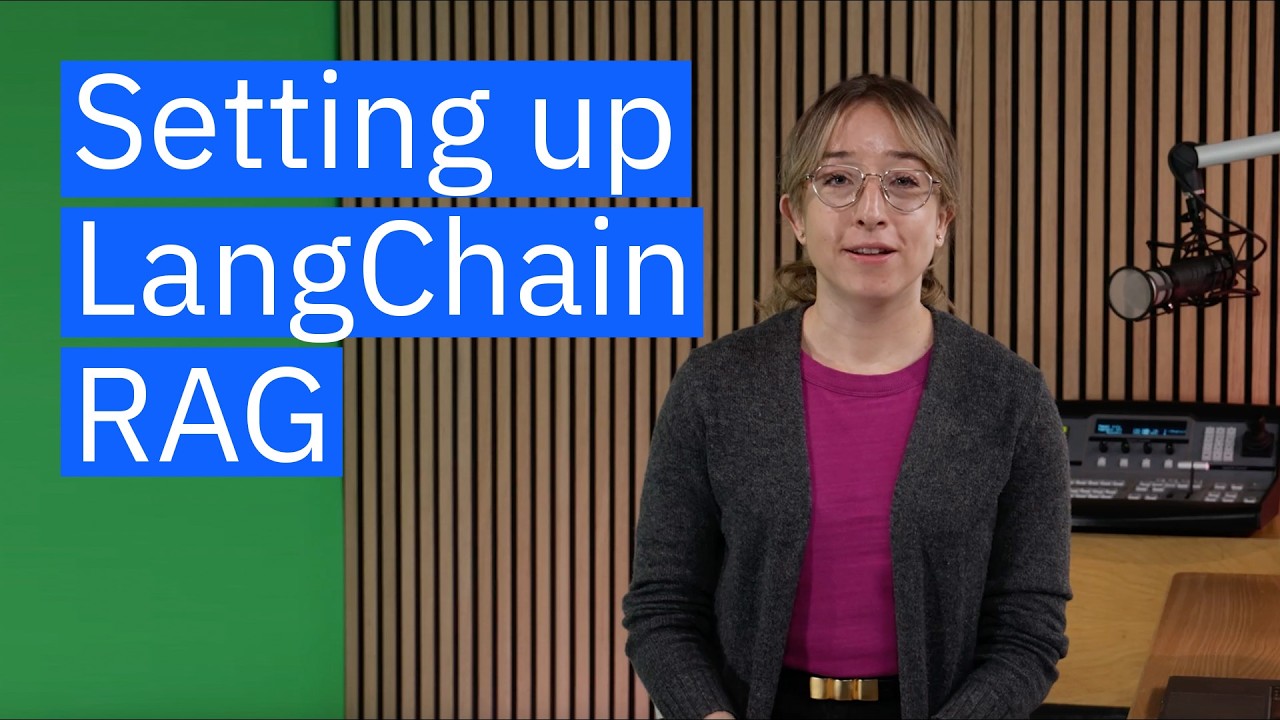In the video, Erica explains how to implement Retrieval-Augmented Generation (RAG) using LangChain in Python to enhance large language models (LLMs) by providing them with up-to-date information from a knowledge base. She outlines the steps to create a knowledge base, set up a retriever, configure the LLM, and establish prompts, demonstrating how this approach leads to more accurate and relevant responses to user queries.
In the video, Erica introduces the concept of Retrieval-Augmented Generation (RAG) using LangChain in Python to enhance the capabilities of large language models (LLMs). She explains that while LLMs can answer a wide range of questions, they often lack up-to-date information, which can lead to inaccurate responses. To illustrate this, she shares her experience of querying an LLM about a recent UFC and IBM partnership announcement, only to find that the model was trained on data limited to 2021. This highlights the need for a method to provide LLMs with current information.
Erica outlines the four essential steps to implement RAG effectively. First, a knowledge base is created, which includes the most recent content from relevant sources, such as IBM.com. Second, a retriever is set up to fetch this content from the knowledge base. Third, the LLM is configured to receive the retrieved content, and finally, a prompt is established to guide the LLM in answering questions based on the provided context. This structured approach allows the LLM to generate more accurate and relevant responses.
To begin the practical implementation, Erica emphasizes the need for an API key and project ID, which can be obtained through a linked video. She also mentions the necessary libraries for the tutorial, suggesting that viewers install them using pip. After importing the required packages, she demonstrates how to save credentials in a .env file for secure access. This setup is crucial for the subsequent steps in the workflow.
The next phase involves gathering information from a list of URLs to create a vector store as the knowledge base. Erica explains how to use LangChain’s web-based loader to load documents from these URLs and clean up the content by removing unnecessary whitespace. She then discusses the importance of chunking the text into smaller pieces for better processing and introduces the IBM Slate model for vectorization. The documents are then stored in a local vector database called Chroma, which serves as the foundation for the retrieval process.
Finally, Erica walks through the setup of the retriever, the generative LLM, and the prompt that combines instructions, search results, and user questions. She demonstrates how to ask questions about the knowledge base, successfully retrieving accurate information about the UFC announcement and other IBM services. The video encourages viewers to experiment with additional queries related to the content loaded into the knowledge base, showcasing the effectiveness of RAG in enhancing LLM responses with current and relevant information.
